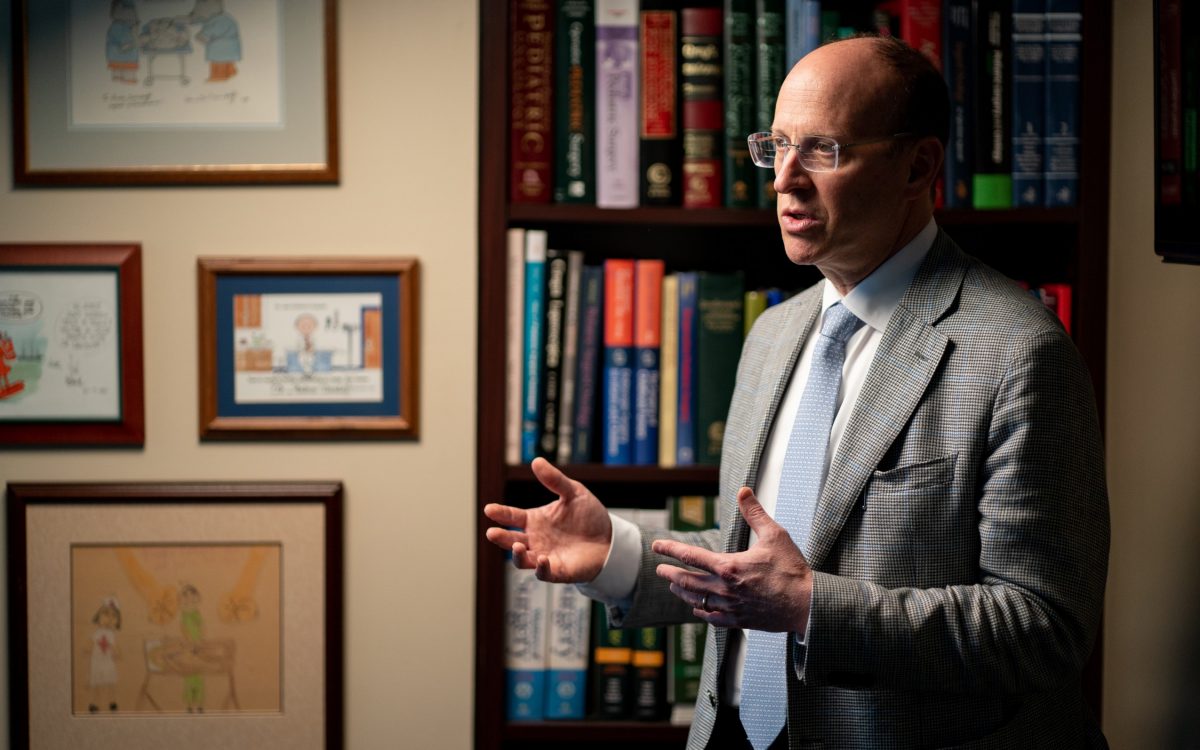
Published today in the Journal of the National Cancer Institute, Andrew Davidoff, MD, St. Jude Department of Surgery, demonstrated that chemotherapy resistance in bilateral Wilms tumor implies a stromal-predominant histology with good outcomes if kidney-saving surgery is performed.
Resistance to chemotherapy is typically associated with poor outcomes for patients with cancer. However, St. Jude Children's Research Hospital scientists demonstrated that in bilateral Wilms tumor (cancer in both kidneys) chemotherapy resistance can point toward a more favorable histology and an ultimately good outcome. The study revealed that tumors that do not respond to neoadjuvant, or tumor-shrinking, chemotherapy are predominantly composed of stromal cells with a well-circumscribed growth pattern. This suggests halting further rounds of ineffective chemotherapy or performing unnecessary biopsies in favor of kidney-sparing surgery may be most beneficial. The findings were published today in the Journal of the National Cancer Institute.
Wilms tumor, or nephroblastoma, is a predominantly pediatric kidney cancer that affects approximately 1 in 10,000 children worldwide. The disease usually presents as unilateral, meaning only one kidney is affected. In the U.S., treatment typically includes a radical nephrectomy, the removal of the kidney, and has a positive overall cure rate of 85%. About 5-10% of Wilms tumor cases present bilaterally, meaning the cancer is present in both kidneys. Bilateral nephrectomy in these cases is not appropriate as it would sacrifice kidney function, so neoadjuvant chemotherapy is the preferred treatment. While the response to neoadjuvant chemotherapy is generally positive in Wilms tumor, resistance can occur. However, these chemotherapy-resistant tumors can still have a favorable outcome.
Joining the dots of drug resistance
"When children have tumors in both kidneys, it's a very different approach than unilateral disease. We have to start with chemotherapy in an effort to shrink the tumors and make them more amenable to kidney-sparing surgery, preferably on both sides," said Andrew Davidoff, MD, St. Jude Department of Surgery chair, "But sometimes the tumors actually grow while receiving chemotherapy, and initially, it seemed like that would be a bad thing."
Despite the rarity of bilateral Wilms tumor, the St. Jude researchers were advantageously positioned to include 68 patients in a study of the correlations between tumor histology, chemotherapy resistance and patient outcomes. In particular, the researchers explored whether such drug-resistant tumors were composed predominantly of stromal cells, which form the supportive tissue of the kidney, rather than epithelial- or blastemal-predominant.
The bigger they are, the harder they fall
The researchers found that Wilms tumors composed of predominantly stromal cells tended to have favorable outcomes despite being resistant to chemotherapy. While stromal-predominant tumors continued growing under chemotherapy, the survival rate for these patients in the study was almost 94%.
"Wilms tumor with unfavorable outcomes actually do generally respond well, at least initially, to the chemotherapy," said Davidoff. "Whereas, at the other end of the spectrum, we have this extremely favorable type, this stromal-predominant tumor, that has typically good outcomes despite not responding very well to the chemotherapy."
The research has implications for treating bilateral Wilms tumor. Rather than continuing chemotherapy or performing a biopsy after resistance to initial chemotherapy, physicians should immediately perform kidney-sparing surgery.
"The take-home message is: Don't assume bad things if the tumor is growing during chemotherapy," Davidoff concluded.
Authors and funding
The study's first author is Colton Duncan, St. Jude; The study's other authors are Suraj Sarvode Mothi, Teresa Santiago, Jordan Coggins, Dylan Graetz, Michael Bishop, Andrew Murphy, Daniel Green, and Matthew Krasin, St. Jude; and Elizabeth Mullen, Dana-Farber Cancer Institute/Boston Children's Hospital.
The study was supported by grants from the National Cancer Institute (P30 CA21765), and ALSAC, the fundraising and awareness organization of St. Jude.
Read the full text of the Journal of the National Cancer Institute article:
Response of bilateral Wilms tumor to chemotherapy suggests histologic subtype and guides treatment
Journal of the National Cancer Institute, published March 27, 2024






